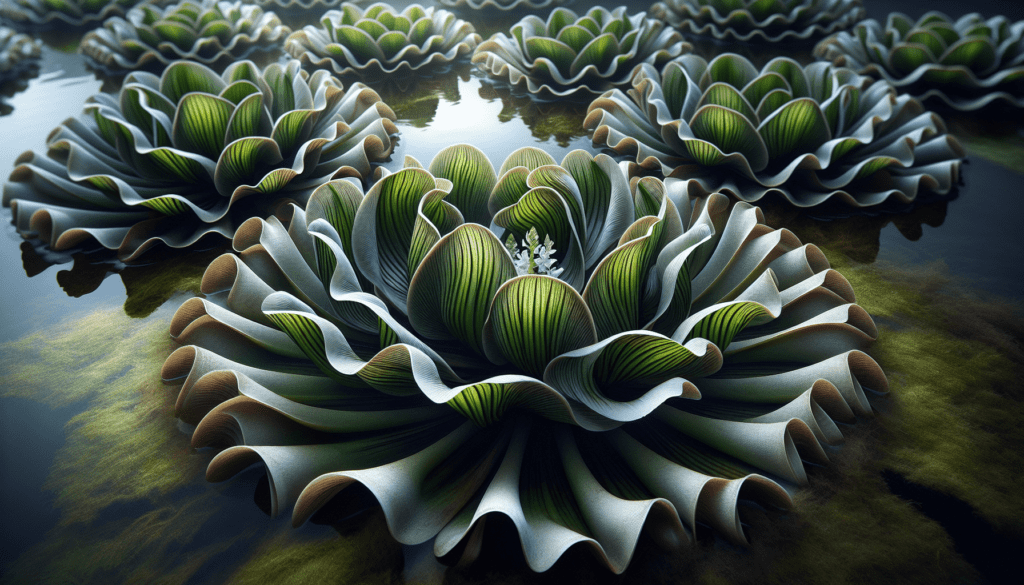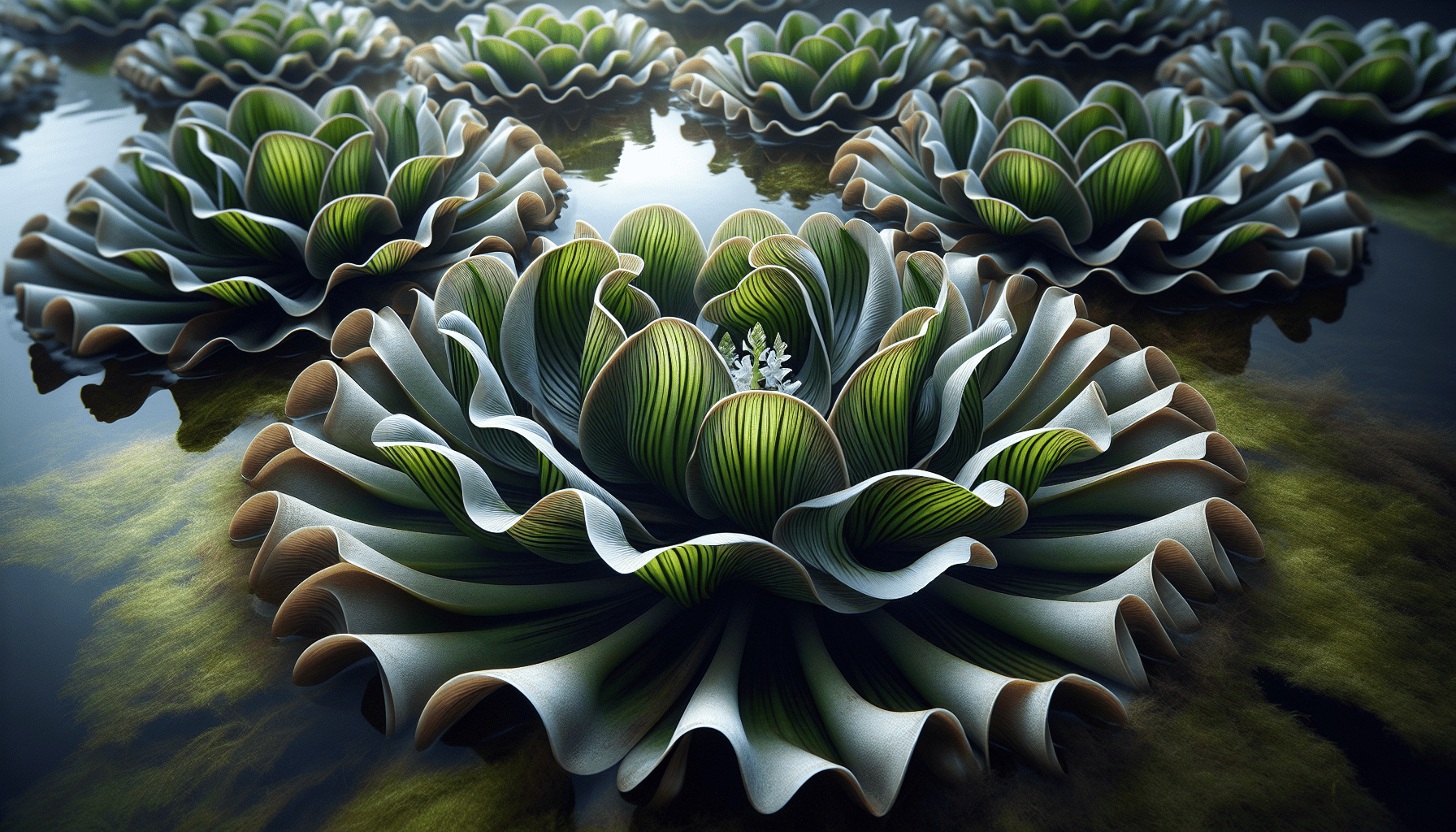In your journey to better understand the biodiversity that populates our water bodies, you may have chanced upon an intriguing aquatic marvel – the channelled water plantain. This unique species of aquatic plant, scientifically known as Alisma canaliculatum, presents a fascinating subject of study due to its interesting characteristics and impacts on the ecosystem. This article seeks to provide a comprehensive understanding of the channelled water plantain, from its physical attributes and growth habits to the role it plays in its natural habitat. Armed with this knowledge, your appreciation for this resilient water-dwelling botanical organism will undoubtedly be augmented.

Overview of Channelled Water Plantain
Channelled Water Plantain is an aquatic, perennial plant that is prominent in various water-logged environments around the world. It bears significant ecological, cultural, and scientific relevance. The plant is distinguished through its characteristic features, scientific classification, and its distribution globally.
Identification features of Channelled Water Plantain
The Channelled Water Plantain can be identified through several distinct features. The plant is typically an emergent perennial and is often located in shallow water. Its key identifiers include long, narrow leaves with prominent midribs and short-stalked flowers with three rounded petals of a pale lilac or white color. These flowers are found in clusters on unbranched inflorescences.
Classification and scientific name
Belonging to the family Alismataceae, the science-based classification of the Channelled Water Plantain is Alisma gramineum. The genus Alisma is a group of flowering plants consisting of about 11 species globally, commonly known as the water plantains.
Origins and distribution
The Channelled Water Plantain is native to Asia, Europe, and North America. This plant is commonly distributed across the temperate regions of these continents. The Channelled Water Plantain thrives in marshy, muddy, or water-logged environments, such as pond margins and lake borders.
Understanding the Ecological Significance
The ecological implications of the Channelled Water Plantain are multifold. Not only does this plant play an integral role in aquatic ecosystems, but it also possesses undeniable importance for wildlife and water quality.
Role in aquatic ecosystems
Channelled Water Plantain serves as a significant component within various aquatic ecosystems. This plant contributes to the wetland plant communities, with the root system creating an ideal habitat for microorganisms and aiding in soil stabilization.
Importance for wildlife
The plant is of considerable relevance to wildlife, acting as a food source for certain species of waterfowl and providing shelter for a range of aquatic insects and amphibians.
Effect on water quality
Channelled Water Plantain, like many aquatic plants, can play an essential role in improving water quality. It does this primarily by uptaking nutrients and heavy metals from the surrounding water, thereby helping to limit eutrophication and contributing to a healthier aquatic environment.
Physical Characteristics
Understanding the plant’s physical characteristics is crucial when identifying Channelled Water Plantain.
Description of plant structure
The Channelled Water Plantain exhibits an emergent perennial structure. Its roots are thin, fibrous, and sprout from a small rhizome. Plants may form dense stands, with simple, erect stems.
Size and appearance
This plant, on average, reaches a height of about 30-50 cm. The Channelled Water Plantain possesses a relatively slender appearance, with its stems hosting a few tall, thin, ribbon-like leaves.
Description of leaves, stems, and flowers
The leaves of the Channelled Water Plantain are linear, elongated, 15-40 cm long, and 5-10 mm wide. Stems of the plant are erect, smooth, and bear short-stalked inflorescence with a few small flowers. The flowers consist of three rounded petals which are pale lilac or white in color.

Habitat and Growing Conditions
Specific conditions are conducive for the growth and development of Channelled Water Plantain.
Preferred water conditions
As implied by its name, Channelled Water Plantain prefers water-based habitats. It thrives best in marshy, muddy environments with shallow standing or slowly moving water.
Soil and sunlight requirements
The plant prefers acidic, neutral, and basic (alkaline) soils. It can grow both in semi-shade (light woodland) or no shade positions but requires moist soil or can even grow in water.
Temperature tolerances
As for temperature requirements, Channelled Water Plantain is hardy and can tolerate a variety of climates. It flourishes in temperate regions of Asia, Europe, and North America.
Reproduction and Growth Cycle
An understanding of the plant’s reproduction and growth process can be beneficial for cultivation purposes.
Seed production and dissemination
Channelled Water Plantain is a flowering plant that produces seeds in fruit capsules. The seeds are dispersed primarily by water movement, enabling the plant to colonize new areas.
Growth rate and seasonal changes
The growth rate of Channelled Water Plantain is fairly moderate. The plant begins to grow in the spring, flowers in the summer, and dies back to its roots in the autumn and winter.
Life span
The Channelled Water Plantain plant is perennial, meaning it has a life span of more than two years. Throughout its life, it undergoes active periods of growth and dormant phases according to the seasons.
Cultural Significance
Channelled Water Plantain contributes to the world not just ecologically, but culturally as well.
Role in folklore and traditional medicine
In traditional medicine, various parts of the Channelled Water Plantain have been used for their purported health benefits. The plant has been used in herbal medicine to treat conditions like dysentery and kidney stones.
Aesthetic value in garden ponds and displays
The delicate, pale flowers of the Channelled Water Plantain add an aesthetic touch to water gardens, ponds, and displays. Their elegant appearance and the plant’s hardiness make it a favourable choice for decoration.
Symbolism and meanings in different cultures
In different cultures, Channelled Water Plantain carries unique symbolism and meanings. For instance, in some cultures, it is seen as a symbol of purity because of its habitat in freshwater bodies.
Conservation Status
Understanding a plant’s conservation status can provide insight into its population trends and threats.
Current population trends
Currently, there have been no alarming trends noted in the global population of Channelled Water Plantain. It continues to be widespread in its native regions, though local populations may show different trends based on specific environmental conditions.
Threats and contributing factors to decline
While no major threats to Channelled Water Plantain have been reported on a global scale, local populations can face risks from factors like habitat loss, pollution, invasive species, and climate change.
Efforts to conserve Channelled Water Plantain
Efforts to conserve this plant species primarily focus on the preservation of its natural habitat. This includes protecting wetlands and freshwater bodies from pollution and degradation, and limiting the spread of invasive species.
Scientific Research
Scientific research into Channelled Water Plantain can provide interesting insights into the plant, its properties, and its potential uses.
Active research studies into the plant
Several research studies are probing deep into the plant’s physiological properties, identifying potential therapeutic applications and understanding its contributions to water purification processes.
Interesting findings and breakthroughs
Scientific studies on Channelled Water Plantain have brought to light its potential in water treatment, containing compounds that have the potential to remove heavy metals from water.
Potential future studies
Owing to its medicinal properties, potential for water purification, and ecological significance, Channelled Water Plantain is likely to be a subject of constant research in the future.
Interesting Facts and Trivia
No exploration of Channelled Water Plantain would be complete without sharing some intriguing information surrounding it.
Little-known facts about Channelled Water Plantain
One lesser-known fact is that Channelled Water Plantain is entirely edible. It produces seeds in fruit capsules that can be consumed after being thoroughly cooked.
Surprising discoveries about the plant
Perhaps surprisingly, not only is Channelled Water Plantain a crucial player in wetland ecosystems, but it also possesses powerful water purification properties.
Trivia or fun facts
An interesting trivia piece about Channelled Water Plantain is that despite the name ‘plantain’, it has no connection to the plantain fruit or the plantain family of plants. Its botanical name ‘Alisma gramineum’ is derived from the Celtic ‘alis’ meaning water, acknowledging its preferred habitat.
